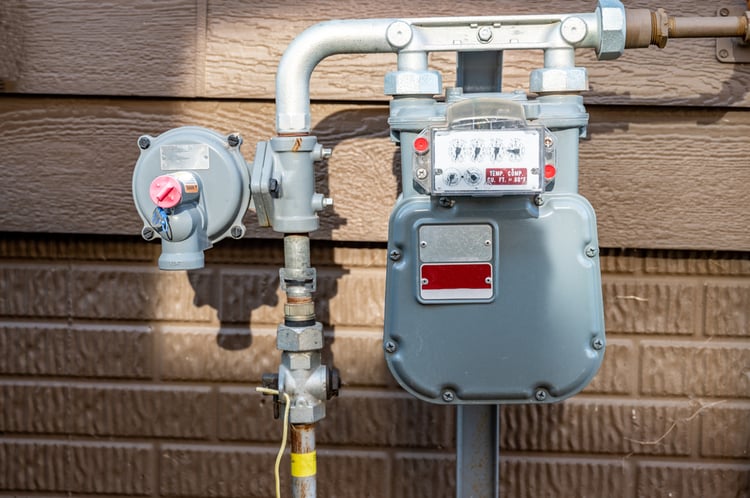August 2022 Inflation Report Published: How Are Energy Prices Behaving?

The US Bureau of Labor Statistics published the latest Consumer Price Index report on Tuesday September 13, covering the 12-month period ending in August 2022. Although inflation remains high at 8.3%, there is a slight drop from the 8.5% figure reported for July 2022.
Recent inflation has been heavily concentrated in the energy sector, and this is still the case in the latest CPI report. However, the energy index decreased by -5.0% between August and July, and the 12-month inflation rate has dropped from +32.9% to +23.8%. The following table compares general inflation figures from the last two reports:
|
Category |
12 months ending July 2022 |
12 months ending August 2022 |
|
All items |
+8.5% |
+8.3% |
|
Food |
+10.9% |
+11.4% |
|
Energy |
+32.9% |
+23.8% |
|
All items less food and energy |
+5.9% |
+6.3% |
Here we will discuss how prices are behaving in the energy sector, where the data is separated into commodities and services. The commodities category includes fuel oil and all types of gasoline, while the services category includes grid electricity and piped natural gas.
Get a professional energy audit for your building and cut your electricity and gas bills.
Overall inflation for the energy sector has decreased, but the results were different for each category. The 12-month inflation rate has decreased in the case of energy commodities, but it has increased for energy services.
August 2022 Inflation Rates for Energy Commodities
The latest CPI report shows a -10.1% decrease in the energy commodities index: the gasoline index was down by -10.6% and the fuel oil index was down by -5.9%. When comparing the 12-month periods ending in July 2022 and August 2022, a slowdown in energy commodity prices can be observed:
|
Category |
12 months ending July 2022 |
12 months ending August 2022 |
|
Energy Commodities |
+44.9% |
+27.1% |
|
Fuel Oil |
+75.6% |
+68.8% |
|
Gasoline (All Types) |
+44.0% |
+25.6% |
The price index for energy commodities has been decreasing in the two latest inflation reports: -7.6% in July 2022 and -10.1% in August 2022. The gasoline index shows the same trend, with a change of -7.7% and -10.6% in the same two months. The fuel oil price index has been decreasing in the three latest reports: -1.2%, -11.0% and -5.9%.
August 2022 Inflation Rates for Energy Services
Contrary to the energy commodity index, the energy services index increased by 2.1% in the latest CPI report. The following table compares the 12-month periods ending in July 2022 and August 2022, like in the previous section:
|
Category |
12 months ending July 2022 |
12 months ending August 2022 |
|
Energy Services |
+18.8% |
+19.8% |
|
Electricity |
+15.2% |
+15.8% |
|
Utility Gas Service |
+30.5% |
+33.0% |
The index for energy services has been rising since the March edition of the CPI report. The monthly price hike had slowed down from +3.5% in June to +0.1% in July, but it has now increased again to +2.1% in August. February 2022 was the last month with a negative change in the energy services index (-0.4%).
The electricity index has also been rising since March, staying above +1.0% per month since the May inflation report. The natural gas index has been more volatile: +8.2% in June, -3.6% in July, and +3.5% in August.
Avoiding the Energy Price Hike in Buildings

Rising electricity and gas prices are bad news for energy consumers who are fully dependent on utility services. However, the savings opportunity offered by energy efficiency measures and solar power also increases along with utility rates. The +19.8% inflation rate reported for August 2022 also means building owners who have previously invested in energy upgrades are now saving more dollars per month.
Natural gas is used to heat nearly half of US homes, and prices can be expected to increase during winter due to higher demand. Residential and commercial building owners can reduce their consumption by making sure their properties are insulated properly, while finding and insulating any air leaks in their building envelopes. The US Department of Energy also recommends setting back the thermostat by 7-10°F during 8 hours per day, which achieves typical energy savings of around 10%.
- Upgrading to a newer and more efficient space heating system is also a viable option, but it involves careful planning and a significant investment.
- Such a project may not be feasible when winter is only a few months away, especially when dealing with a large building.
To reduce their electricity bills, building owners can take advantage of the Investment Tax Credit for solar power. Recently, the Inflation Reduction Act increased this incentive from 26% to 30%, while extending it for 10 years. This incentive will become "technology-neutral" in 2025, which means it will be available for all renewable generation technologies.

Michael Tobias
Michael Tobias, the Founding Principal of NY Engineers, currently leads a team of 150+ MEP/FP engineers and has led over 4,000 projects in the US
Join 15,000+ Fellow Architects and Contractors
Get expert engineering tips straight to your inbox. Subscribe to the NY Engineers Blog below.

